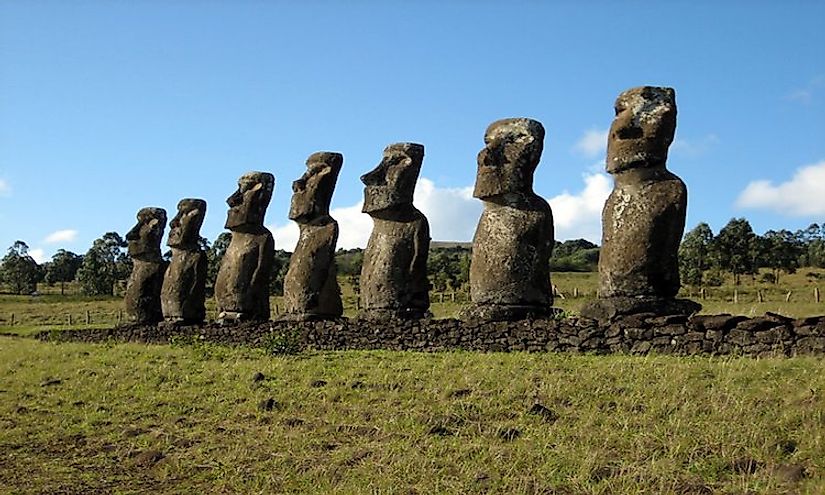UNESCO World Heritage Sites In Chile

Chile is a South American country occupying a long narrow strip of land with a total area of 291,930 square miles. Santiago is the capital and also the largest city in the country and the national language is Spanish. It is a unitary presidential republic with a population of 18,006,407 people. Due to the shape of the country, the climate is very diverse and suppots a very rich collection of flora and fauna. The tourism sector in the country has experienced very high growth in the recent past. In 2005, tourism generated over 4.5 billion to the country. The annual number of tourists to Chile is two million. The main tourist attraction sites include the Incaic architecture, Valley of the Moon, and the Altiplano lakes. I this article, we will discuss some of UNESCO world heritage sites found in the country.
UNESCO World Heritage Sites In Chile
Humberstone and Santa Laura Saltpeter Works
In 1872, an extraction company founded the saltpeter works in Santa Laura. James Thomas founded the Peru Nitrate company in the same year. Both these works, now named La Palma, grew very quickly and bought towns that had lovely buildings in the English style. In 1929 during the great depression, this economic model practically collapsed because of synthesis of ammonia by Germans. A company by the name COSATA acquired the works and renamed La Palma Officina Santiago Humberstone after the founder. In 1960, both works were abandoned due to the rapid decline and COSATAN disappeared. After a decade the towns had become ghost cities and were declared monuments by the government and were open for tourists. In 2005, UNESCO declared the site a world heritage site and due to the vulnerability of the structures and the effects of a recent earthquake, they was put on the list of world heritage sites in danger.
Churches of Chiloe
These are sixteen churches located in the central eastern zone of the Chiloe archipelago. Unlike the classical Spanish architecture, these churches are made of wood representing a unique example of Latin America architecture. The wood used was native and is specially designed with materials to resist the humid and rainy oceanic climate. They were built in the 18th century when the archipelago was still part of the Spanish crown possessions which represent the fusion of the European Jesuit culture and local native’s people’s skills and traditions. UNESCO inscribed the sites as world heritage sites in 200. Several institutions including the University of Chile have led efforts to preserve these historic structures and to publicize them for their unique qualities.
Rapa Nui National Park
Rapa Nui National Park located on an island, Easter Island. The park is geographically isolated and occupies an area of 6,800 hectares. It was taken over by Chile in 1888 and was made a UNESCO world heritage site in 1995. Its fame arose from the 887 stone statues created by the Rapa Nui people who inhabited the island in 300 AD. The statutes range from the height of 6-70 inches sculpted from distinctive yellow-brown volcanic rocks. In the period between 1837 and 1864, the statues were toppled although with minimal damage and were later restored with international assistance. The island has extensive biodiversity and high level of endemism due to its isolated position. The main threat to the park is forest fires and erosion due to the influx of tourists. The government of Chile together with the national council for monuments has provided financial support for the conservation efforts.
Sewell Mining Town
Sewell Mining Town is an uninhabited mining town in the slopes f Andes Mountain. The site is characterized by extremes of the climate at an elevation of 6,000 feet above the sea level. Sewel’s origin dates back in 1905 when William Branden, an American Engineer, was authorized by the Chilean government to exploit a copper mine in the area. Branden built roads and a railway line connecting the mine site with Rancagua City, 20 miles away. In 1960, the company had expanded with more than 15,000 workers. It was more economical to move the employees to Rancagua and the town faced a population decrease. In 1990, a policy to protect the site was implemented. The most outstanding attributes are the industrial installations, electric infrastructure, and the drinking water and the sewer systems. Some of the buildings have been restored and are subject to maintenance from time to time. UNESCO in 2006, inscribed it as a cultural site.
Preservation Efforts Of Heritage Sites In Chile.
Degradation, human activities and climatic change are the major threats to heritage sites in Chile, population growth is pushing human settlements into wildlife reserves and forests, increasing the conflict between humans and animals. The Government of Chile, UNEP, and UNESCO have invested time and resources in a bid to conserve these sites. Reconstruction of damaged sites and restoration of old cities are some of the initiatives that are being undertaken to ensure the existence of the sites.
UNESCO World Heritage Sites In Chile
| UNESCO World Heritage Sites in Chile | Year of Inscription; Type |
| Churches of Chiloé | 2000; Cultural |
| Humberstone and Santa Laura Saltpeter Works | 2005; Cultural Site in Danger |
| Qhapaq Ñan Andean Road System | 2014; Cultural |
| Rapa Nui National Park | 1995; Cultural |
| Sewell Mining Town | 2006; Cultural |
| Valparaíso Historic Quarter of the Seaport City | 2003; Cultural |







